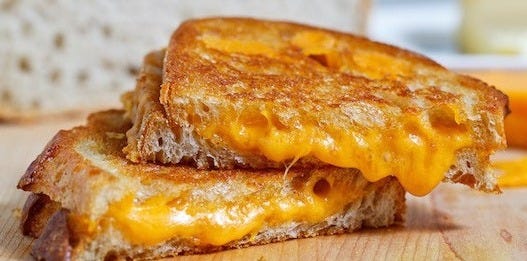The Healthiest Ways to Cook Eggs
I'll cover new data from a 2025 human trial about "Advanced Glycation Endproducts," teach you the healthiest ways to cook eggs, and reveal science-based kitchen biohacks.
How did a Harvard medical student find himself on the other side of the world in Pune, India, shouting scientific facts about eggs into the ear of a famous rapper?
That’s one bizarre moment I’ll never forget. But how did I end up in that unusual situation, lecturing Akon on how to cook and serve eggs for his health?
Last year, I did an eggs-periment where I ate 720 eggs — and it went internationally viral. Not as viral as Akon’s “Lonely,” which has 1.2 billion views! Still, that experiment made me considerably less lonely as apparently everyone wants to meet the oddball doctor who does experiments on himself. Hence… Akon in India.
Now, I get more questions about eggs than you could possibly imagine. And one question that comes up again and again — including at that party in India — is: “What’s the healthiest way to cook eggs?”
I'm going to answer that, but not with a one-liner. Let’s start with a new randomized controlled trial published in Cell Reports Medicine that’s influenced how I cook in my kitchen. We’re going to take the scenic route through the data.
But by the end of this, I promise, you’ll know how to cook eggs that aren’t just fluffier, but potentially better for your heart and long-term health.
Cooking Methods Determine Advanced Glycation Endproducts (AGEs) - New Randomized Controlled Trial
In this study, researchers enrolled 20 healthy individuals and had them eat two identical diets but cooked using different methods.
For two weeks, they used low-heat, moist cooking methods like boiling and steaming.
For two more weeks, they used high-heat, dry methods like baking and grilling.
Why the different methods?
They were testing the formation of Advanced Glycation End Products (AGEs) — compounds formed when proteins or fats combine with reducing sugars like glucose.
AGEs can be formed in the body and absorbed from food.
Maillard Reaction: A Dance of Flavor, with a Health Tax
Let me try to describe it in a way that will hopefully stick: The Maillard reaction is what happens when food gets that beautiful, browned crust — like on a seared steak, toasted bread, or crispy roasted vegetables. But it’s more than just browning — it’s a kind of edible alchemy.
Think of it like this: When proteins and sugars in food are exposed to heat, they start to dance together in a complex chemical tango. This reaction creates hundreds of new flavor compounds (termed “melanoidins”) — nutty, savory, roasted notes — the kinds of flavors that make our mouths water. It's basically nature’s flavor amplifier.
You know that rich smell when coffee is roasting, or the crispy skin of roast chicken, or the toasted edge of a grilled cheese, or the deep brown crackle of oven-roasted potatoes, or the caramelized coat on a marshmallow. That’s the Maillard reaction making magic.
In short, AGEs are where sugar shakes hands with proteins and fats, and they both forget to let go.
But this same delicious browning also creates these AGEs, which, when eaten in excess, can stir up inflammation in the body.
The Maillard reaction is kind of like the flavor jackpot… with a tiny health tax attached.
I guess every sizzle comes with a side of oxidative stress.
High levels of AGEs derived from the diet (or made inside the body, as we will discuss later) are associated with inflammation, oxidative stress, and chronic diseases like heart disease.
High, dry heat produces more AGEs than low, moist heat.
What the researchers found was that changing cooking methods alone caused measurable changes in circulating AGE levels, including compounds like carboxymethyl lysine (CML), pyrraline, and methylglyoxal (MG-H1), which has been linked to cancer.
*Green represents the low AGE cooking period (low heat and/or moist, e.g. boiling or steaming), and orange represents the high AGE cooking period (high heat and/or dry, e.g. baking or grilling). You can see an increase in circulating AGE during the high vs low AGE cooking period.
Now, I’m giving you way more details than I gave Akon but essentially when I met him at the birthday party of a nutritionally curious wealthy Indian philanthropist. All I said to him was this: “Ya, eating 720 eggs didn’t increase my cholesterol because the hormone cholesin signaled to my liver to make less.”
To which he said, in true rapper wordplay style, “You’re the eggs-pert doc. Like a human hen-cyclopedia.”
Ya, I was shell-shocked too!
So, based on these data, cooking eggs using lower heat and more moisture produces fewer AGEs and, all else equal, healthier eggs. That means poaching or boiling eggs may be healthier than frying them at high heat.
But there’s more — let’s get into how to hack even your scrambled eggs.
The rest of this letter will review:
How to hack your scrambled eggs to lower AGEs
A Major Flaw in the Study, and What it Means
What’s MORE important than cooking method in Determining AGE Levels
Keep reading with a 7-day free trial
Subscribe to Nicholas’s Substack to keep reading this post and get 7 days of free access to the full post archives.






